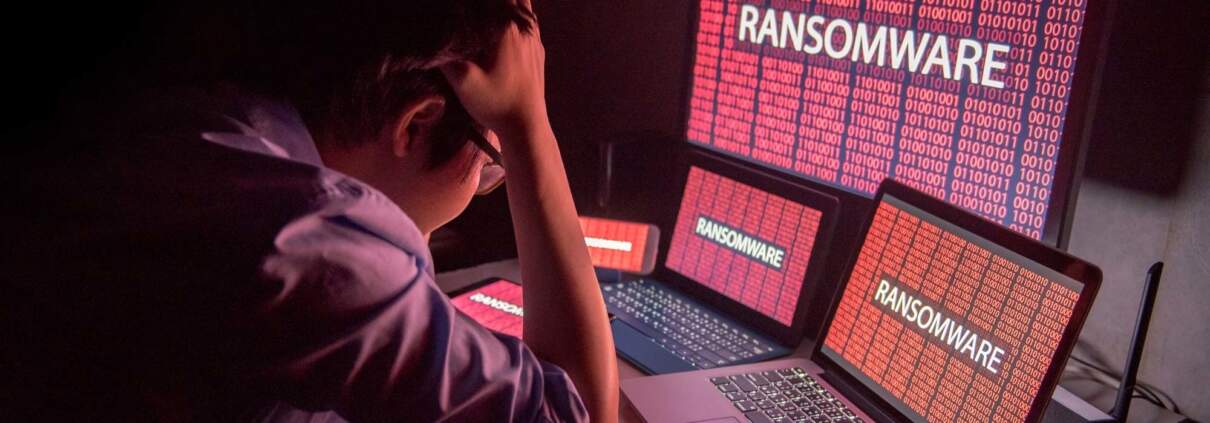
Cyberattacks have increased exponentially over the last year as businesses across the world switched over to fully remote work. Although cyberattacks of every kind have become more frequent, ransomware has seen the biggest jump. In fact, ransomware skyrocketed by 150% in 2020 compared to the previous year, according to Infosecurity. Fortunately, there are several ways to prevent malware attacks against your business.
How To Prevent Ransomware
The more you know about ransomware, the easier it is to avoid. So, before we get into prevention and ransomware best practices, let’s first define what this kind of malware is. Ransomware is a type of malicious code that encrypts your data. Once your device has been infected, hackers keep the data encrypted and offer to unlock it if a ransom is paid.
There are a few ways a ransomware attack can be carried out, but the most common method is phishing or spear phishing. Phishing is a social engineering tactic meant to manipulate you into performing an action. Spear phishing is a variation of phishing that targets you specifically by using information relevant to you. An example of phishing would be a deceptive email encouraging you to click on a link or open an attached file.
The key to preventing or mitigating a ransomware attack is to use cybersecurity best practices. This is something that involves everyone in your organization, so it’s necessary to get your entire team on board with these practices.
Ransomware Best Practices
Although ransomware is a growing problem, following these prevention tips can help you keep your business safe from future attacks.
- Education: The first step to preventing ransomware infections starts with education. Take the time to educate your staff about the dangers of ransomware and other cyberthreats. Online courses, learning tools, and other helpful items can boost their understanding of the subject.
- Training: Training goes hand in hand with education. Have your managed service provider (MSP) create realistic scenarios—like simulated email phishing attacks—that force your team to use what they know.
- High-Risk Employees: Identify the members of your staff who are at a high risk of being targeted. These are people who could have a noticeable impact on your network. For example, anyone who has administrative rights to your systems is considered high risk.
- Backups: There’s no need to pay a ransom for encrypted files when you have a backup. Frequently create backups of your most recent data. These should also be protected and stored offline.
- Communication: Your employees aren’t perfect, and they can forget the lessons they learned. It helps to maintain ongoing communication about cybersecurity with reminders to your team.
- Filter Configuration: While it’s possible for hackers to hide ransomware in common files like Word documents, most rely on less common executable file types. For example, you’re more likely to see ransomware in files that contain .exe, .vbs, and .scr. By configuring your anti-spam filters to flag these file types, you can make it easier to avoid an attack.
- Monitoring: If an infection manages to penetrate your ransomware firewall, remember that you’re not completely helpless. Detecting ransomware on your network early can make it possible to eliminate the malware before it causes too much damage.
My Website Was Hacked, Now What?
What makes ransomware so dangerous is that it’s designed to spread through a network quickly. So, if an attack is successful, a fast response is essential to recovery. If you discover ransomware in your network, here are a few things you can do:
- Quarantine: Isolate whatever system was infected so the malware can’t spread. This is as easy as unplugging the network cable.
- Notify: Get in touch with your IT department or MSP as soon as possible. They should have recovery procedures in place.
- Don’t Restart: Some forms of ransomware are capable of encrypting critical files. If you turn the computer off, it may not turn back on.
- Sanitize: Clean all removable media, connected drives, or anything else that has come in contact with the machine.
Stay Protected With Americom
At Americom, we take the protection of your data seriously. As your partner, we perform IT assessments, training, and network monitoring to enhance the strength of your cybersecurity. With over 30 years of experience under our belt, you can rest easy knowing your IT is safe and secure.
Contact us today to learn more.
About Us
Americom has been St. Louis’s leading IT and print services partner for over 30 years. If it’s on the network, we manage IT!


